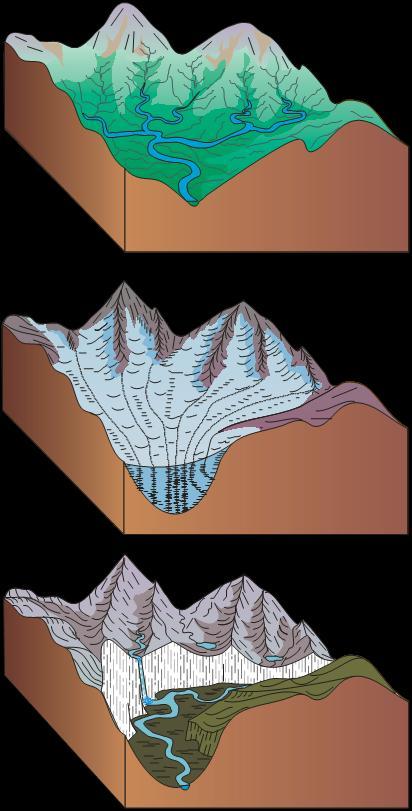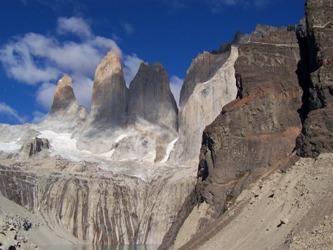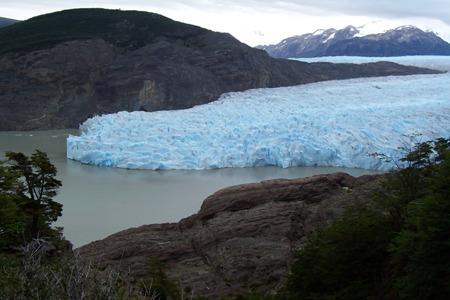Ice Erosion
Erosive activity of glaciers
Image Credit: MBG
Effect of glacial erosion, Torres del Paine, Chile.
Image Credit: MBG
Glacier and glacier lake, Torres del Paine National Park, Chile
Snow deposited at high elevations has potential energy that is converted into energy of motion when it is converted to ice and flows as a glacier.
A glacier that flows down slope is a powerful erosive agent.
The movement of glaciers predominantly erodes by abrasion/scouring and plucking. In the abrasion process, debris in the basal ice scrapes along the rock surface, polishing and gouging the underlying rocks, while in the process of plucking glaciers cause pieces of bedrock to crack off and be incorporated in the flowing ice.
These processes usually combine erosion and transport by a water network beneath the glacier.


